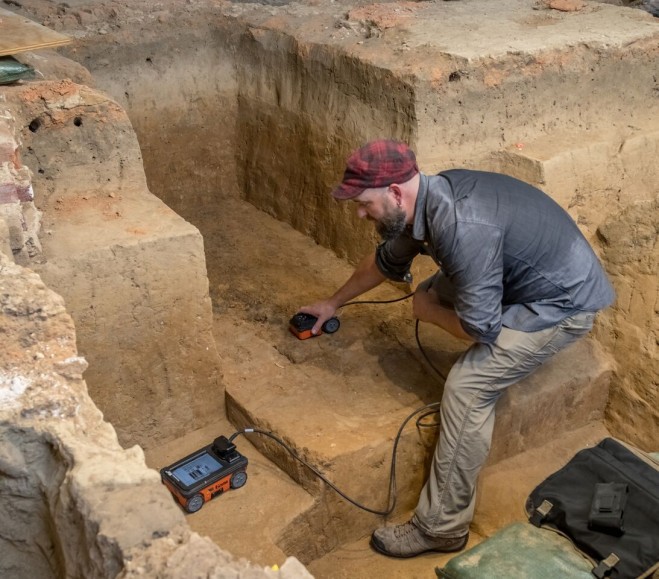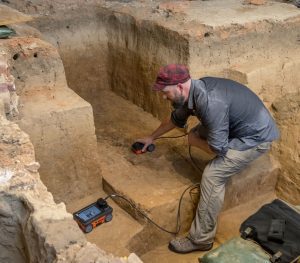
 GSSI, a manufacturer of ground-penetrating radar (GPR) equipment, is continuing its partnership with the Jamestown Rediscovery Foundation. GSSI archaeologists Dan Welch and Peter Leach brought new GPR equipment to remotely sense what lies beneath Jamestown.
GSSI, a manufacturer of ground-penetrating radar (GPR) equipment, is continuing its partnership with the Jamestown Rediscovery Foundation. GSSI archaeologists Dan Welch and Peter Leach brought new GPR equipment to remotely sense what lies beneath Jamestown.
Jamestown—known for being the first permanent English settlement in the New World—will be commemorating in 2019 the 400th anniversary of the first representative government and arrival of the first Africans. To honor these two events, the Jamestown Rediscovery Foundation is excavating two sites where these events took place in 1619.
Last spring, Welch and Leach joined senior archaeologist Dave Givens to help define the landscape of the first Africans. The Angela site, named after one of the first Angolans to arrive in 1619, is located in the “town” portion of Jamestown, a 40-acre landscape that remains largely unexplored. Located on National Park Service (NPS) property, the site consists of seven acres of garden, domestic quarters and storehouses all belonging to Angela’s owner, wealthy Jamestonian Captain William Pierce.
“Our goal is to define the lost, 17th-century landscape in which Angela lived,” said Givens. Archaeologists from GSSI, NPS and Jamestown Rediscovery conducted a GPR survey in part of the town. The results not only clearly defined numerous buildings, boundary ditches and post holes, but also added critical information on how the town was laid out.
Building on the success of the work on the first Africans, Dan and Peter returned to Jamestown this summer to help solve a new problem: the site of the first General Assembly in the New World. This site is located inside the Memorial Church, a brick structure built over the original foundation in 1906. Under the floor of the modern church were at least three iterations of churches, all built on top of an original timber-framed structure constructed in 1617. It was in this church that the democratic experiment of representative government first met in 1619. The goal of the archaeologists is to define the 1617 church and the location where the assembly met prior to the space being converted into a museum in the spring of 2019.
